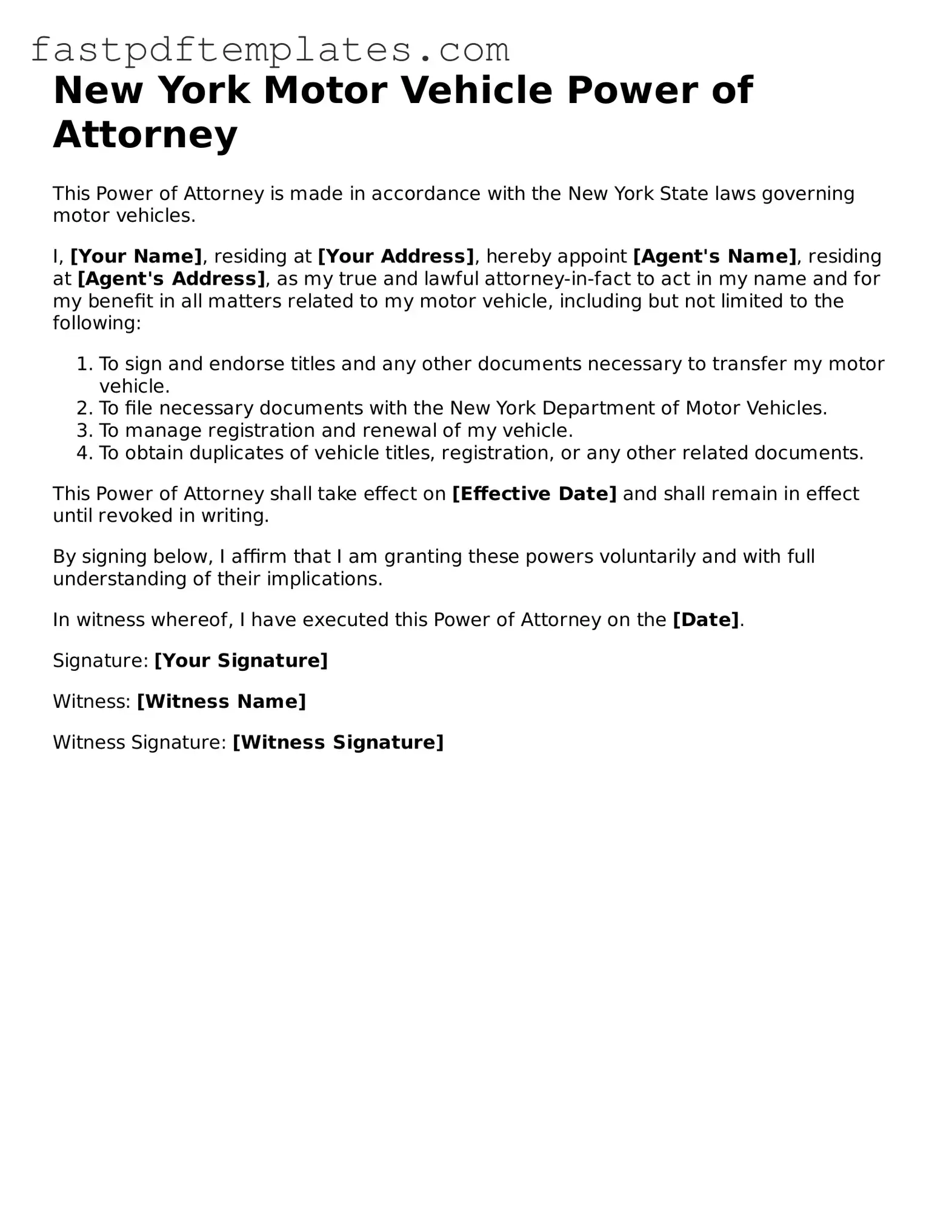Attorney-Approved New York Motor Vehicle Power of Attorney Document
The New York Motor Vehicle Power of Attorney form allows an individual to designate another person to handle specific motor vehicle-related transactions on their behalf. This legal document is essential for facilitating processes such as title transfers, vehicle registrations, and other necessary actions involving motor vehicles. Understanding its importance can streamline your interactions with the Department of Motor Vehicles.
Access Document
